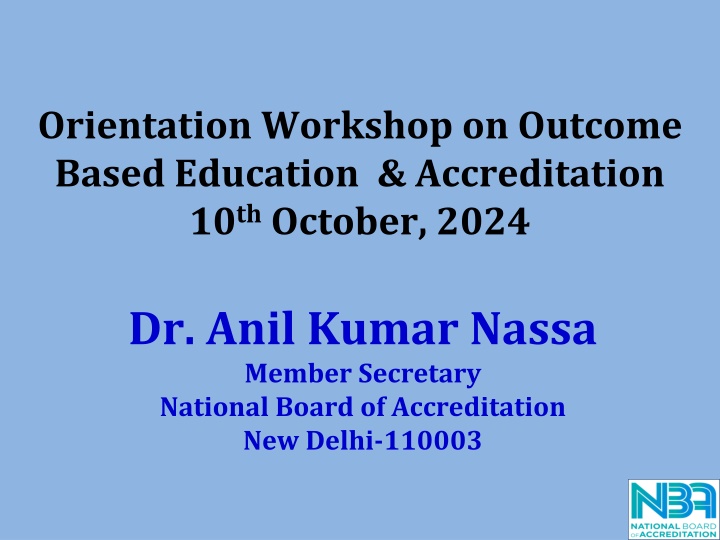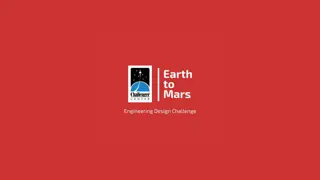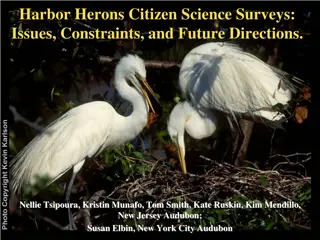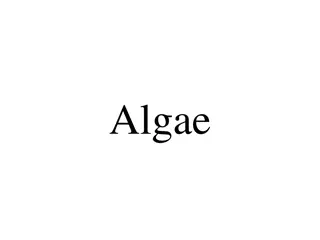
Outcome-Based Education and Accreditation in Academic Institutions
Explore the orientation workshop on Outcome-Based Education and Accreditation led by Dr. Anil Kumar Nassa from the National Board of Accreditation. Learn about the credible accreditation system, the purpose of accreditation, and outcome-based program accreditation for engineering and technology programs.
Download Presentation

Please find below an Image/Link to download the presentation.
The content on the website is provided AS IS for your information and personal use only. It may not be sold, licensed, or shared on other websites without obtaining consent from the author. If you encounter any issues during the download, it is possible that the publisher has removed the file from their server.
You are allowed to download the files provided on this website for personal or commercial use, subject to the condition that they are used lawfully. All files are the property of their respective owners.
The content on the website is provided AS IS for your information and personal use only. It may not be sold, licensed, or shared on other websites without obtaining consent from the author.
E N D
Presentation Transcript
Orientation Workshop on Outcome Based Education & Accreditation 10th October, 2024 Dr. Anil Kumar Nassa Member Secretary National Board of Accreditation New Delhi-110003
NBA NBA is committed to provide: Credible System of Accreditation Transparent & Accountable System 2
Credible System of Accreditation Strength and credibility of accreditation process largely lies in the integrity, professionalism. Evaluators face of NBA. Transparency: Report discussed in the meetings of EAC in presence of all team chair Recommendations of EAC are considered in sub- committee of AAC. Copy of the report is sent to the Institution Change in decision communicated to the Institution with reasons 360 degree feedback honesty, expertise and 3
What is Not the Purpose of Accreditation Not to find faults with the institution but to assess the status-ante of the performance. Not to denigrate the working style of the institution and its programs but to provide a feed back on their strengths and weaknesses. Not to demarcate the boundaries of quality but to offer a sensitizing process for continuous improvement in quality provisions. Not to select only institutions of national excellence but to provide benchmarks of excellence and identification of good practices. 4
Outcome-Based Program Accreditation Knowledge and competencies profiles Graduate Attributes(GAs)/Program Outcomes(POs) which form the student learning outcomes: PO1: Engineering Knowledge PO2: Problem Analysis PO3: Design/Development of Solutions PO4: Conduct Investigations of Complex Problems PO5: Engineering Tool Usage PO6: The Engineer and The World PO7: Ethics PO8: Individual and Collaborative Team work PO9: Communication PO10: Project Management and Finance PO11: Life-Long Learning: 5
NBA Two Tier System Introduction of two-tier system based on types of Institutions. Tier I Format: Applicable to the engineering/technology programs offered by Institutions and by University constituent Colleges of the Universities. Tier-II Format: Applicable institutions, i.e., those Institutions which are affiliated to a University. For both (Tier-I & Tier-II): Same set of criteria have been prescribed for accreditation. Outcome Based Accreditation academically autonomous departments and to non-autonomous and technical Colleges 6
NBA Visit Two and a half day visit The team has discussions with Head of the Institute/Dean/Heads of Department /Program and course coordinators Members of the management (to discuss how the program fits into the overall strategic direction and focus of the Institution and management support for continued funding and development of the program) Faculty members Alumni Students Employers 7
Marks of SAR of UG (Engg.): Tier-I Criteria Name of the Criteria Mark/Weightage No. 1. Outcome-Based Curriculum 120 2. Outcome-Based Teaching Learning 120 3. Outcome-Based Assessment 120 4. Students Performance 120 5. Faculty Information 100 6. Faculty Contributions 120 7. Facilities and Technical Support 100 8. Continuous Improvement 80 9. Student Support and Governance 120 TOTAL 1000 8
Tier I Grades % of Marks Grade 75% & Above Y 60% and <75% C 40% and <60% W <40% D 9
Award of Accreditation UG (Engg.,): Tier-I Accreditation for Six Years: 1. There should not be any Deficiency (D) or Weakness (W) in any of the criteria and at least six criteria must be fully compliant (Y), with only 'Concerns (C)' in the remaining criteria (Y >=6, W & D=0). 2. The no. of faculty having Ph. D degree available in the Department & allied Departments is greater than or equal to 20% of the required no. of faculty averaged over two academic years i.e. CAY and CAYm1. 3. Student Faculty Ratio (SFR) in the Department and allied Departments should be less than or equal to 20:1, averaged over 3 academic years i.e. CAY, CAYm1 and CAYm2. 4. HoD should possess Ph.D. degree for the programs under consideration in the CAY. 10
Award of Accreditation UG (Engg.,): Tier-I Accreditation for Six Years: 5. Required no. of Professors or Associate Professors Case 1: If the Department/School is not running multiple UG (Eng.,) programs and does not have allied departments, which are running UG (Engg., ) programs, then the program under consideration needs either 2 Professors or 1 Professor and 1 Associate Professor on a regular basis with Ph.D. degree in CAY and CAYm1. Case 2: If the Department/School, departments, is running multiple UG (Engg.,) programs, the program under consideration needs either 2 Professors or 1 Professor and 1 Associate Professor on a regular basis with Ph.D. degree in CAY and CAYm1. Additionally, the remaining UG (Engg.,) programs (N*) need N Professors or N Associate Professors in Department/ School/ Allied departments on a regular basis with Ph.D. degree in CAY and CAYm1 in total. Note*: Exclude the no. of Professors/Associate Professors for the UG (Engg.,) programs that have been running for less than 3 years (CAY, CAYm1) including allied 11
Award of Accreditation for UG (Engg.,): Tier-I Accreditation for Three Years: 1. There should not be any Deficiency (D) and at least three criteria must be fully compliant (Y). 2. The no. of faculty having Ph. D degree available in the Department & allied Departments is greater than or equal to 20% of the required no. of faculty averaged over two academic years i.e. CAY and CAYm1. 3. Student Faculty Ratio (SFR) in the Department and allied Departments should be less than or equal to 25:1, averaged over 3 academic years i.e. CAY, CAYm1 and CAYm2. 4. HoD should possess Ph.D. degree for the programs under consideration in the CAY. 12
Award of Accreditation for UG (Engg.): Tier-I Accreditation for Three Years 5. Required no. of Professors or Associate Professors Case 1: If the Department/School is not running multiple UG (Eng.,) programs and does not have allied departments, which are running UG (Engg., ) programs, then the program under consideration needs either 2 Professors or 1 Professor and 1 Associate Professor on a regular basis with Ph.D. degree in CAY and CAYm1. 13
Award of Accreditation for UG (Engg,): Tier-I No Accreditation of the Program Case 2: If the Department/School, including allied departments, is running programs, the program under consideration needs either 2 Professors or 1 Professor and 1 Associate Professor on a regular basis with Ph.D. degree in CAY and CAYm1. Additionally, the remaining UG (Engg.,) programs (N*) need N Professors or N Associate Professors in Department/ School/ Allied departments on a regular basis with Ph.D. degree in CAY and CAYm1 in total. Note*: Exclude the no. of Professors/Associate Professors for the UG (Engg.,) programs that have been running for less than 3 years (CAY, CAYm1) multiple UG (Engg.,) 14
Pre-Qualifiers: TIER-I UG (Engg.,) Program S.N. Pre Visit Qualifiers Current Status Compliance Status Complied/Not Complied Essential qualifiers 1 Whether approval of the competent authority (Approval of AICTE/UGC/BoG of Universities/ Deemed Universities etc.) for the program under consideration has been obtained for all the years including current academic year Whether the Student Faculty Ratio (SFR) in the Department and allied Departments is less than or equal to 25:1, averaged over three academic years: CAY, CAYm1, and CAYm2 Whether the number of faculty having Ph.D degree available in the Department & allied Departments is greater than or equal to 20% of the required number of faculty averaged over two academic years i.e. CAY and CAYm1. Whether two batches have passed out in the program under consideration Whether HoD possesses Ph.D. degree 2 SFR 3 4 5 15
Pre-Qualifiers: TIER-I UG (Engg.,) Program S.N. Pre Visit Qualifiers Current Status Compliance Status Complied/Not Complied Essential qualifiers 6 Case 1: If the Department/School is not running multiple UG (Engineering) programs and does not have allied departments, which are running undergraduate engineering programs, then the program under consideration needs either 2 Professors or 1 Professor and 1 Associate Professor on a regular basis with Ph.D. degree in the current academic year (CAY) and the previous academic year (CAYm1). Case 2: If the Department/School, including allied departments, is running multiple UG (Engineering) programs, the program under consideration needs either 2 Professors or 1 Professor and 1 Associate Professor on a regular basis with Ph.D. degree in CAY and CAYm1. Additionally, the remaining UG (Engineering) programs (N*) need N Professors or N Associate Professors in the Department/ School/ Allied departments on a regular basis with Ph.D. degree in CAY and CAYm1 in total. 16
Guidelines for Faculty and SAR: The faculty will be counted in the respective year, if the faculty has joined before or on 31st August of the same year and continued till 30th April of the subsequent year. There is no age limit to the consideration for the emeritus faculty as long as they are physically fit to take classes and engage with students, and are employed on a full time basis. The available and required no. of PhD. in the Department shall be truncated to its nearest lower integer. In the disciplines like MBA or PGDM or specialized areas like Biotechnology, all the qualifications relevant and purposeful to those disciplines need to be considered, in addition to the M.Tech/MBA/ PGDM degrees. All the faculty whether regular or contractual (except part- time or hourly based), will be considered. All regular faculty members shall meet the AICTE qualifications and experience requirements. 17
Guidelines for Faculty and SAR: Contractual faculty appointed with any terminology whatsoever, who have taught for 2 consecutive semesters with or without break between the 2 semesters in corresponding academic year on full-time basis shall be considered for the purpose of calculation in the faculty student ratio. Following will be ensured in case of contractual faculty: Shall have the AICTE prescribed qualifications and experience. Shall be appointed on full time basis and worked for consecutive two semesters with or without break between the 2 semesters during the particular academic year under consideration. Should have gone through an appropriate process of selection and the records of the same shall be made available to the visiting team during NBA visit. 18
Guidelines for Faculty and SAR Academic year is considered from July to June If the SAR is submitted before 30th September, then the CAY shall be the previous academic year and if the SAR is submitted after 30th September, then the CAY shall be the running academic year for the purpose of data consideration and calculations. CAY: Current Academic Year CAYm1: Current Academic Year Minus 1 CAYm2: Current Academic Year Minus 2 CAYm3: Current Assessment Year Minus 3 19
Student Faculty Ratio (SFR) Considered by NBA UG Engineering Programs (Tier I & Tier II): 25:1 for the Accreditation of 3 years 20:1 for the Accreditation of 6 years PG Engineering and MCA Programs: 25:1 for the Accreditation of 3 years 20:1 for the Accreditation of 6 years Diploma Engineering Programs: 30:1 for the Accreditation of 3 years & 6 years PG Management Programs: 25:1 for the Accreditation of 3 years 15:1 for the Accreditation of 6 years. UG & PG Pharmacy Programs: 20:1 for the Accreditation of 3 years 15:1 for the Accreditation of 6 years Diploma Pharmacy Programs: 25:1 for the Accreditation of 3 years & 6 years 20
Role & Responsibilities of Chairman Team Leader/Chairman: Lead the evaluation team Chair Team meetings Chair Exit meeting Spokes person for the Team Harmonize comments from team members while preparing report Collate Team inputs from review of Self- Assessment Report(SAR) and request clarification or further information 21
Role & Responsibilities of Chairman Team Leader: Conduct a pre-visit meeting with all evaluators on day zero of the visit. Initiates discussion on the observations made after going through SAR in the pre-visit meeting Prepares a list of documents to be verified, questions to be raised and information to be obtained from the institution/department Collects pre-visit report from each evaluator Ensures adherence of visit schedule 22
Role & Responsibilities of Chairman Verifies institutional record regarding constitution of GC, Proceedings, Finance, List of faculty members, non-teaching staff, their salaries, safety and security related matters etc Conducts a meeting of all the experts in the evening for sharing their observations during the day and also preparing additional list of documents/evidences to be obtained. Chairs meetings with the stakeholders in the institute Conducts a meeting in the evening of second day and complete the evaluation process and finalize the report based on the evidences collected, interaction with stakeholders and reliable documents produced Ensure Consistency of marks with the comments in each Sub-Criteria and Criteria. Uniformity of marks in Criteria and Sub-Criteria of various Sign and be responsible for evaluation report 23
Role & Responsibilities of Chairman Conducts exit meeting on day three with head of the institution Ensures no discussion on the findings of the outcome of accreditation Presents orally strengths and weaknesses of common facilities in the colleges while experts present details of the respective program strengths and weaknesses All other aspects of the outcomes of visit are confidential and not to be leaked at any place under any situation Provides a chance to the institute to continue with the accreditation process or withdraw the application for any program(s) In case of withdrawal, ensures that it is given in writing by the head of the institution there itself. 24
Desirable Attributes of Chairman Good professional standing Expertise in subject matter and/or accreditation system & process Professional approach Leadership skills Communication skills Listening in particular 25
Role & Responsibilities of Program Evaluators Team Members, including Chairman Evaluate programme together with Team Leader Familiar with accreditation system in general Well-versed with accreditation criteria Good understanding of outcomes-based system and assessment Go through Self-Assessment Report(SAR). Thorough evaluation of criteria and outcomes Professional approach, unbiased, free of conflict of interest Committed full-time during accreditation visit, focused 26
Role & Responsibilities of Program Evaluators Experts while en-capsuling their findings into the reports, do not mention the shortcomings identified during the visit in the report. Expert s oral comments in the meeting during the visit are also not mentioned in the evaluation report. Where a program is recommended for full accreditation i.e. for 6 years by the Evaluator, the strengths of the program on the basis of which the program is being recommended for full accreditation, should be elaborated in detail at the relevant place in Evaluator s Visit Report 27
Attributes of Program Evaluators Enthusiastic volunteer Technically competent Well-regarded Effective communication Listening skill Interpersonal skill Team-oriented Professional approach Courteous Time management Organized 28
Conflict of interest Definition of possible conflict of interest: have financial or personal interest in the university/institution; or have or have had a close, active association with the programme or faculty/school in the University/Institution. Close or active association are, for example: Employment, as staff or consultant; Attendance, as student at the faculty/school; Receipt of honorary degree from the faculty/school; Membership of a board of the university or any committee advising on the programme being accredited. 29






















